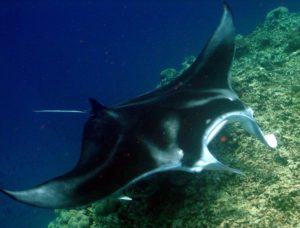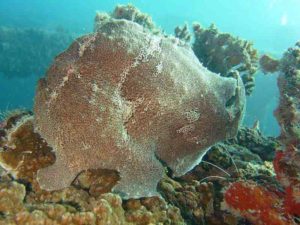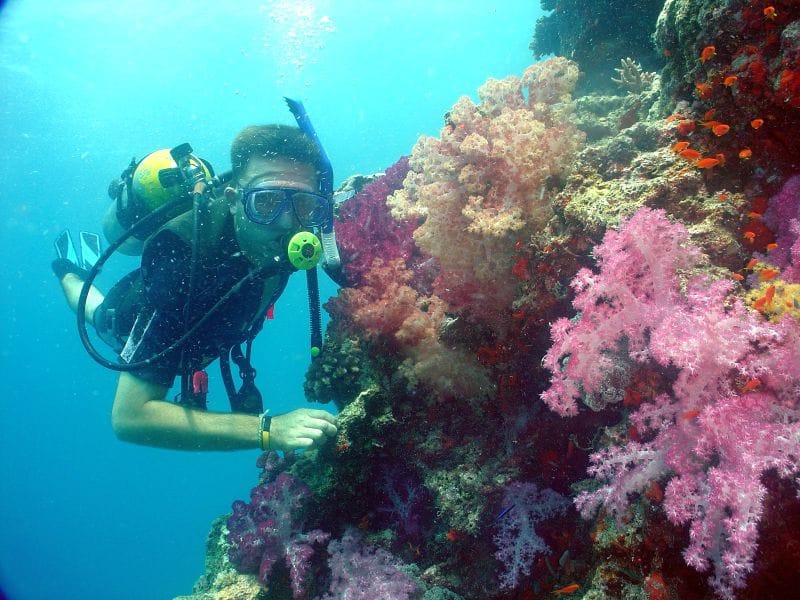Because of the size of Lomaiviti and dive sites being so far out most sites can comfortably only be visited from ship-based diving. There are only a few Liveaboard dive vessels operating in Fiji.
Ships are based on the mainland with easy access to Nadi International Airport. Check-in is often on arrival day and when you wake up the next morning the night cruise has brought you to the first dive site.
To include cultural experience a visit with Kawa ceremony to a Fijian village on one of the islands is often part of the cruise, usually on the last none diving day before departure.
Liveaboard’s, a comfortable way to experience the best of Fiji diving
NAI’A Fiji is the flagship of Fiji liveaboard diving.
Depart from Lautoka near Nadi Airport to explore world-class diving in many of the most beautiful and biodiverse dive sites in the Fiji Islands. Seven or ten-day dive cruises to the highlights of Central Fiji, as well as seasonal Humpback whale expeditions to the Kingdom of Tonga. Nai’a also offers Nitrox and Rebreather Diving. NAI’A has found Fiji’s Finest Diving in the Lomaivit, Vatu i Ra Triangle.
Aggressor Fleet used to run the Island Dancer II previously known as the Sere Ni Wai. A liveaboard vessel built for comfort, aesthetics, and suitability for Fiji diving.
A maximum of 18 guests will depart from Suva to explore the reefs of Gau, Wakaya, Koro and Namenalala Islands.
Tui Tai Fiji
The proud motor sailor Tui Tai sets sail from Savusavu on diving cruises lasting from 5 to 7 days. The trips combine cultural expeditions and diving adventures on the reefs around Somosomo Straight, Rabi, and Northern Lomaiviti.
Go beyond a typical liveaboard experience and enjoy land-based adventures and authentic cultural experiences.
Famous Liveaboard Dive Sites in Lomaiviti, Fiji

Wakaya Passage: In the cold season mantas and hammerheads are almost guaranteed. Huge schools of fish, Whitetip, Nurse, Grey reef sharks, Marble Rays, Turtles, Eagle rays and Barracudas. And on the reef, we show you the hiding places of Blue ribbon eels, Leaf fish, Lionfish…
Vatu Vula at Makogai channel. Trevally, Spanish mackerel white tips, gray reefs shark, occasionally mantas or eagle rays, schools of fusiliers and plenty of coral fish amongst an abundance of hard and soft coral…
Saxophone: A tunnel – enter at five exits at 20 meters. At your left an impressive overhanging wall with colorful soft coral, right at 20 m leads you to an outstanding point that drops to bottomless depth, huge schools of trevally and barracuda, occasional manta ray, and white tip or hammerhead, schools of tuna…
E6: A seamount in Vatu I Ra channel, rising from 1000 meters, major ocean current feeds the dive sites with nutrition and creates a plethora of life. Stunning hard and soft coral reefs with their resident reef life attract large pelagic fish around the pinnacles…
 Levuka Passage a narrow passage, strong currents and deep. Schooling fish by the thousands, giant groupers, eagle and manta rays, barracuda, trevally, Whitetips, gray reef, and bull sharks are regularly seen as well as occasional tiger shark sightings…
Levuka Passage a narrow passage, strong currents and deep. Schooling fish by the thousands, giant groupers, eagle and manta rays, barracuda, trevally, Whitetips, gray reef, and bull sharks are regularly seen as well as occasional tiger shark sightings…
Jim’s Alley a shallow water soft coral garden dive. Reef fish and critters live around the coral make this an epic dive. Strange little critters like ghost pipefish, decorator crab, frogfish, needlefish, nudibranchs, shrimps …. to the occasional manta rays that keep the cleaner wrasse busy…
Nigali Passage a narrow passage in Gau Islands hard coral barrier reef, separating the open deep ocean from the sheltered waters of the Gau lagoon. Currents can be strong in the narrow passage and attract large schooling fish like trevally, barracuda, bass, mackerel to feed in the currents. There is a resident group of about 20 gray reef sharks…..
North Save-a-Tack Passage in Namena Marine Reserve large schools of small and big pelagic fish patrol the passage and the nearby coral bommies. On the bottom, large groupers wait above in the water column barracuda, trevally, bass, mackerel scad, gray reef sharks, hundreds of schooling fish and occasional large rays can make this an unforgettable dive when dived at the right conditions…



